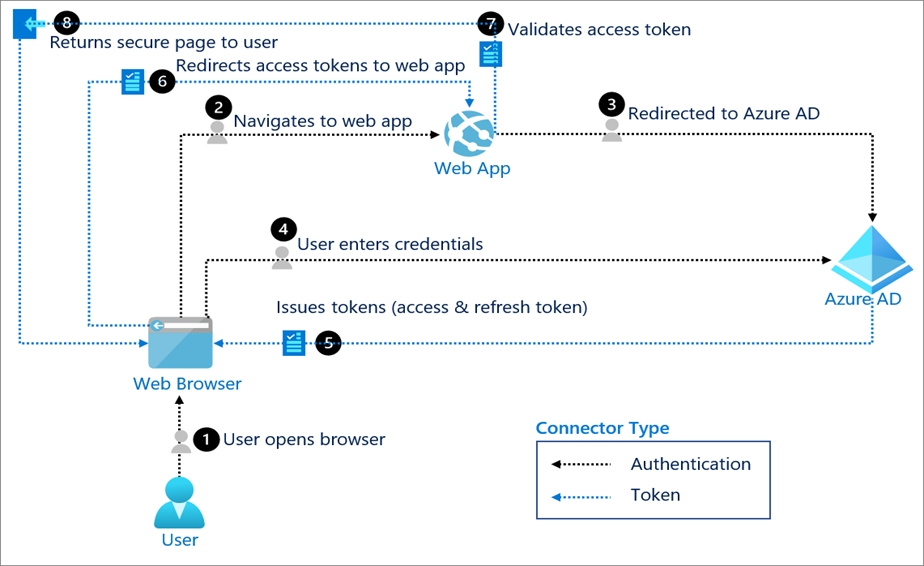

HOTSPOT -
You are designing a software as a service (SaaS) application that will enable Azure Active Directory (Azure AD) users to create and publish online surveys. The
SaaS application will have a front-end web app and a back-end web API. The web app will rely on the web API to handle updates to customer surveys.
You need to design an authorization flow for the SaaS application. The solution must meet the following requirements:
✑ To access the back-end web API, the web app must authenticate by using OAuth 2 bearer tokens.
✑ The web app must authenticate by using the identities of individual users.
What should you include in the solution? To answer, select the appropriate options in the answer area.
NOTE: Each correct selection is worth one point.
Hot Area:


Davin0406
Highly Voted 2 years, 4 months agoAzureJobsTillRetire
2 years, 2 months agoNotMeAnyWay
Highly Voted 1 year, 8 months ago[Removed]
Most Recent 3 months, 3 weeks agoLazylinux
10 months, 2 weeks agoobllew
1 year, 7 months agomarcellov
1 year, 5 months agowillybsmith
1 year, 9 months agoKing_Laps
1 year, 10 months agoazkumar305
1 year, 10 months agozellck
2 years agoGarryK
2 years agoOPT_001122
2 years, 1 month agoORRRRR98
2 years, 4 months agokay000001
2 years, 5 months ago